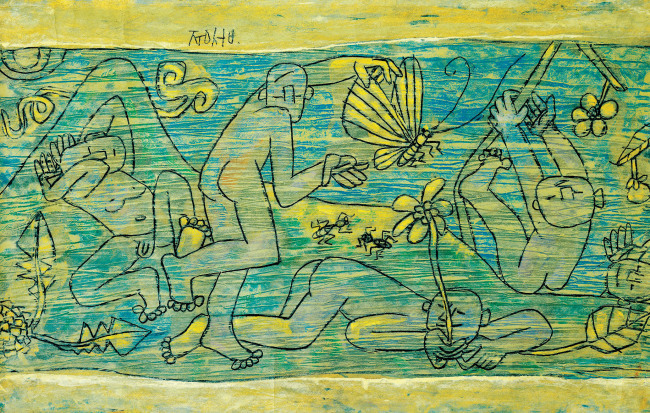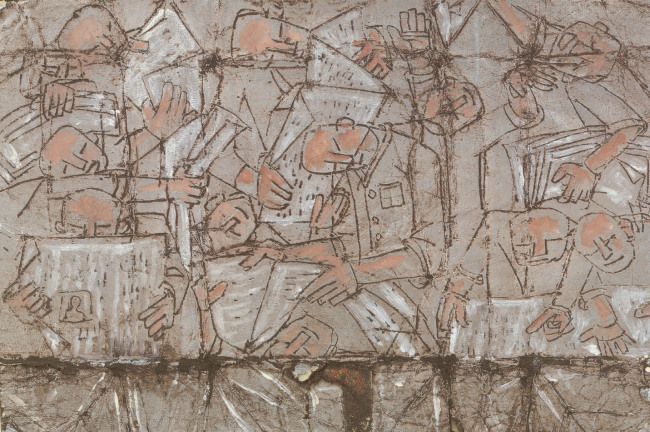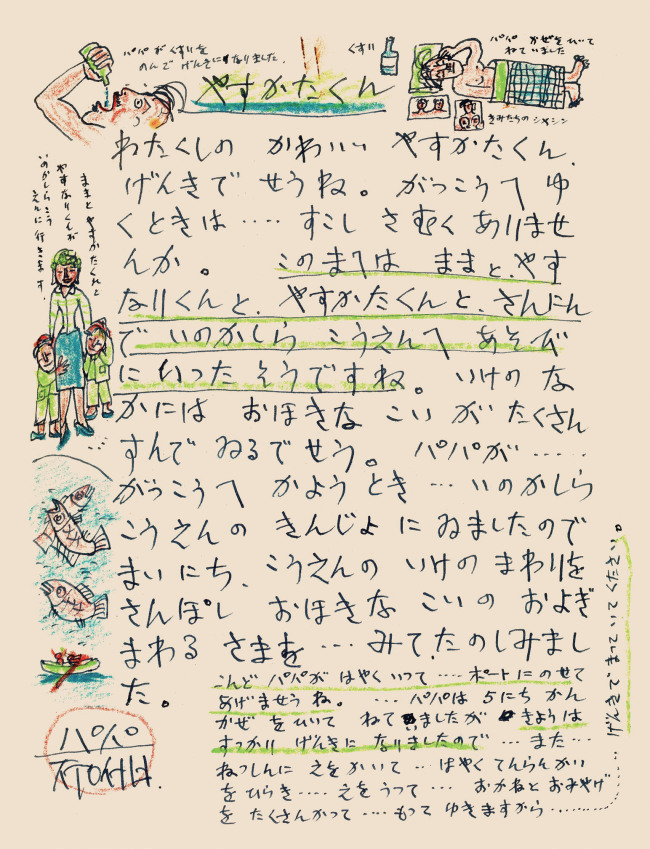 |
| “Children of Spring” by Lee Jung-seop (Gallery Hyundai) |
During the Korean War (1950-53), when art materials such as paper ― not to mention canvas ― were scarce, Korean painter Lee Jung-seop (1916-56) drew and painted on the foil linings of cigarette packs.
His three small silver foil drawings, first purchased by Arthur McTaggart, director of the U.S. Culture Center in Korea in 1955, and donated to the Museum of Modern Art New York a year later, will be on view in Seoul for the first time since they left the country 60 years ago.
MOMA’s decision to include Lee’s foil drawings in its collection was the starting point for his posthumous fame. Lee’s works were largely ignored while he was alive. His silver foil paintings were once dismissed as cheap and lewd. Living in poverty and despair during the war, he often fell ill physically and mentally.
 |
| “People Reading the Newspaper, Number 84” by Lee Jung-seop (Gift of Arthur McTaggart/The Museum of Modern Art) |
 |
| “Letter to Taehyun” by Lee Jung-seop (Gallery Hyundai) |
Lee is best known for his painting of a fighting bull, its strength and energy depicted with bold brushstrokes. This was in sharp contrast to the fragility of his life.
Lee suffered the most from being separated from his family during the war, when his Japanese wife and two children went to Japan to escape the hardships in Korea. Missing his family, Lee wrote letters to his wife and children and created paintings and drawings of women and children. The works related to his family such as the miniature paintings on postcards and letters with drawings are on display along with the silver foil paintings at Gallery Hyundai from Jan. 6 to Feb. 22.
The postcard paintings, featuring images instead of words, were sent between 1940-42 to Yamamoto Masako, whom Lee met while studying art in Japan and fell in love with. The small postcard paintings offer a glimpse of his painting style right after graduating from art school.
Lee and Masako married in 1945 and had two children. The couple settled in city of Wonsan, South Hamgyeong Province, in what is now North Korea, but had to flee to the South when the Korean War broke out in 1950. Living in dire poverty, Lee decided to send Masako and their two sons to Japan.
He frequently sent letters to his family, which he described as the “only joy” he found in his hardships and loneliness.
His letters to his family featured drawings of his daily life ― preparation for an exhibition, fighting the cold ― or scenes of reuniting with them. In the letters to his sons, he asked about their health, their school life and the picnics they went on with their mother at a nearby park. Some of Lee’s drawings in the letters, including one in which the boys are playing with peaches, later appeared in his larger paintings. His letters to his wife, which expressed his longing to meet her and their sons again, remain inspirational love letters for many Koreans.
The exhibition “Lee Jung-seop’s Love, Family” runs from Jan. 6 to Feb. 22 at Gallery Hyundai in Jongno-gu, Seoul. For more information, call (02) 2287-3591.
By Lee Woo-young (wylee@heraldcorp.com)

